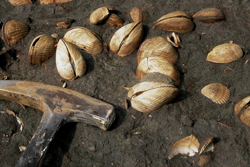6 A&S Physicists Awarded Breakthrough Prize
Our universe is dominated by matter and contains hardly any antimatter, a notion which still perplexes top scientists researching at CERN’s Large Hadron Collider. The Big Bang created equal amounts of matter and antimatter, but now nearly everything—solid, liquid, gas or plasma—is…


 The
The  SU Alumnus Caitlin Keating-Bitonti ’09 is the corresponding author of the study. She conducted the research as an undergraduate student under the guidance of Linda Ivany, associate professor of earth sciences, and Scott Samson, professor of earth sciences, both in Syracuse University’s
SU Alumnus Caitlin Keating-Bitonti ’09 is the corresponding author of the study. She conducted the research as an undergraduate student under the guidance of Linda Ivany, associate professor of earth sciences, and Scott Samson, professor of earth sciences, both in Syracuse University’s